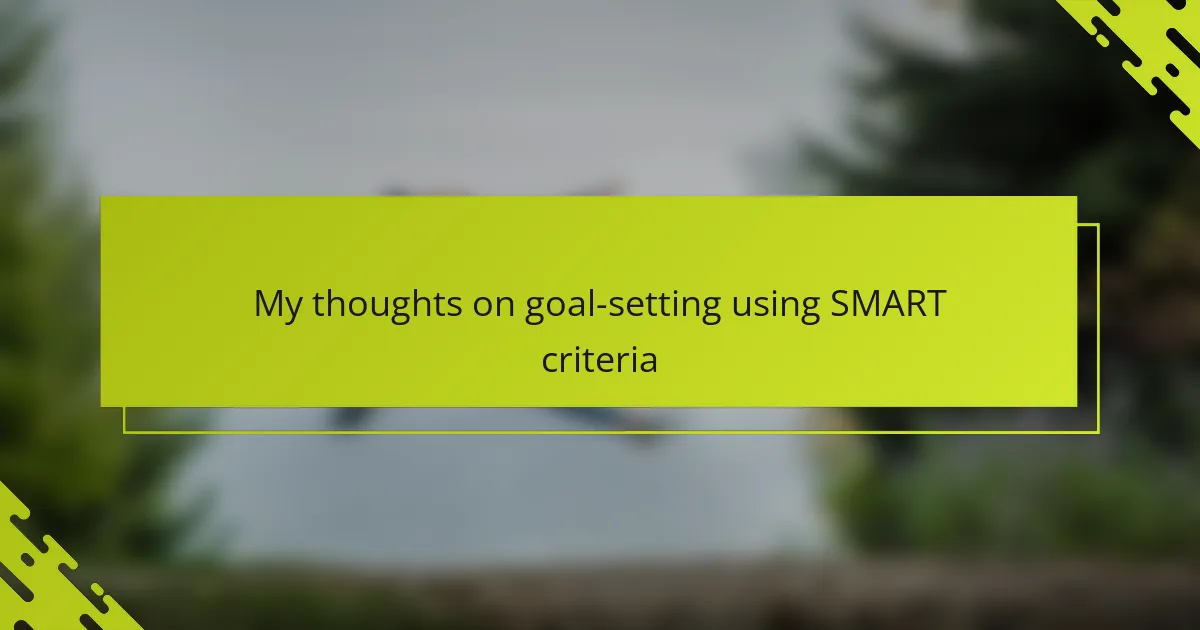Key takeaways
- Goal setting provides clarity and direction, transforming vague aspirations into actionable plans through intentional reflection.
- The SMART criteria (Specific, Measurable, Achievable, Relevant, Time-bound) help structure goals, making them more manageable and accountable.
- Setting goals within communities enhances personal empowerment and visibility, allowing individuals to define success on their own terms.
- Celebrating small wins and fostering flexibility in goal-setting can sustain motivation and make the journey more rewarding.
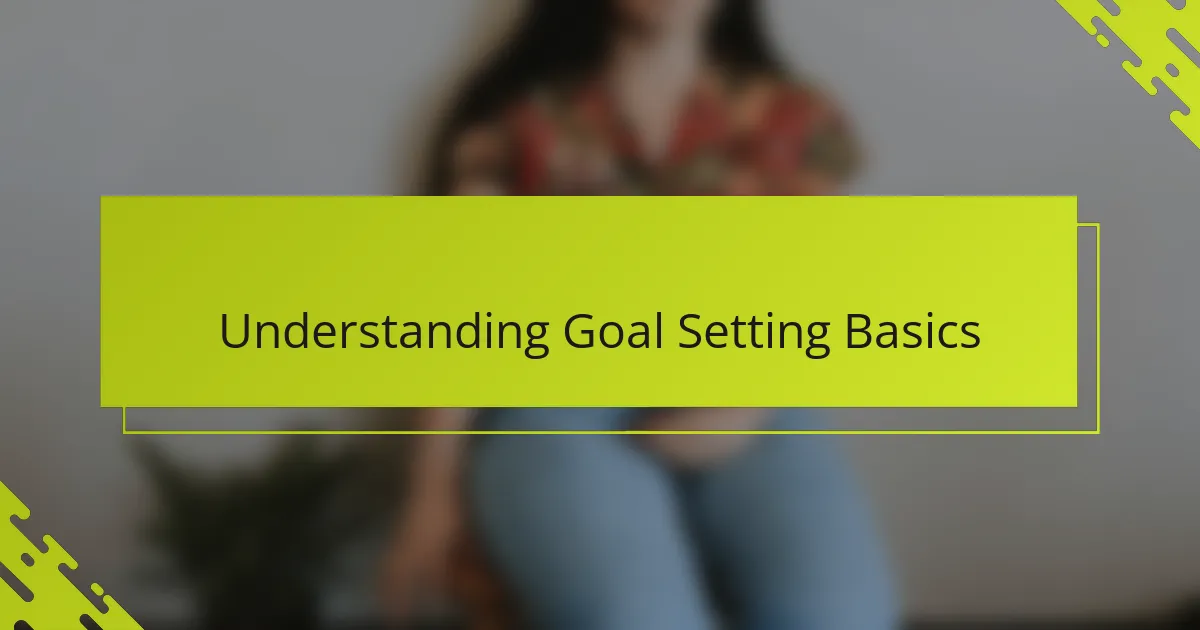
Understanding Goal Setting Basics
Goal setting, at its core, is about defining what matters most to you and creating a clear path to achieve it. I’ve often found that without a concrete goal, my efforts feel scattered, much like trying to navigate a labyrinth without a map. Have you ever felt that restless energy, unsure where to focus it?
When I first started setting goals, it was tempting to dream big but vague—“I want to be happier” or “I want to improve my health.” But those wishes lacked direction, leaving me frustrated. I realized that understanding the basics means recognizing that goals need clarity and structure to truly guide action.
What struck me most is that goal setting isn’t just about ticking boxes. It’s a deeply personal process that invites reflection: What do I really want? Why does it matter? These questions help turn abstract hopes into meaningful commitments, making the journey both purposeful and motivating.
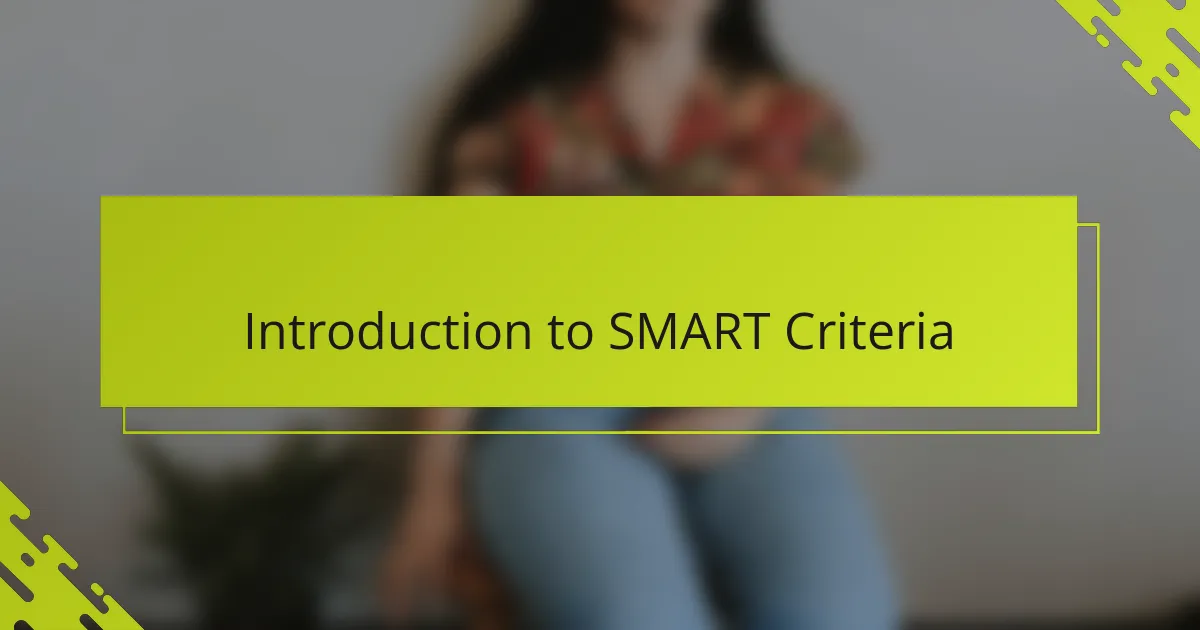
Introduction to SMART Criteria
I remember the first time I encountered the SMART criteria, it felt like a breath of fresh air in the fog of vague ambitions. SMART stands for Specific, Measurable, Achievable, Relevant, and Time-bound—each word acting like a stepping stone towards clearer, more manageable goals. Have you ever set a goal that was so broad it felt impossible to track progress? That’s exactly where SMART helps.
What I appreciate about the SMART framework is how it transforms wishful thinking into actionable steps. Making a goal specific and measurable means I can see exactly what success looks like, and that clarity fuels my motivation. For instance, instead of saying “I want to connect more with community,” I learned to say, “I will attend one local queer women’s event each month.” Suddenly, it feels real and reachable.
Sometimes, I wonder if we overlook how much structure can nurture our dreams instead of limiting them. Setting achievable and relevant goals ensures that I’m not biting off more than I can chew, while the time-bound element holds me accountable. It’s like giving myself a gentle push—not pressure, but encouragement—to keep moving forward. Does that balance resonate with you, too?
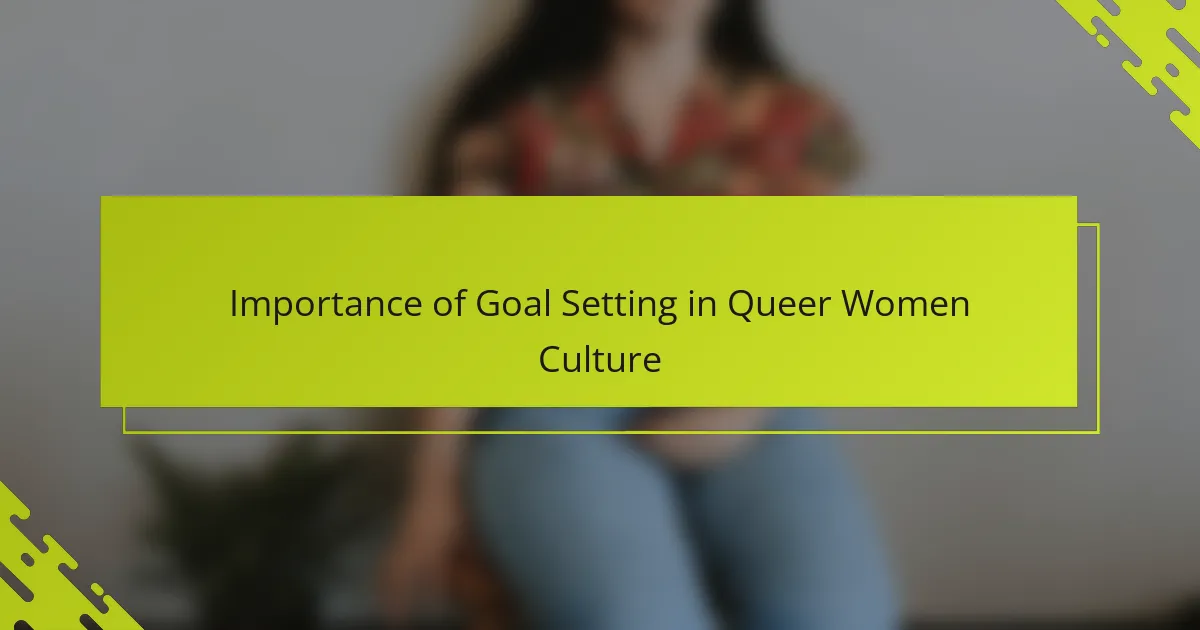
Importance of Goal Setting in Queer Women Culture
Goal setting within queer women culture holds a special significance because it empowers us to claim our narratives amid a world that often sidelines our voices. I’ve noticed how setting clear goals makes the journey of self-discovery and community-building feel intentional rather than accidental. Have you felt that subtle pressure to prove yourself or your worth? Goal setting becomes a way to reclaim control and define success on our own terms.
For many of us, goals aren’t just about personal achievement—they’re acts of resistance and affirmation. When I set goals connected to my identity and culture, it feels like I’m weaving my story into a larger tapestry of resilience. It’s deeply motivating to know that each step forward contributes not only to personal growth but also to the visibility and strength of our community.
I used to overlook the importance of goal setting because survival often took precedence over planning. But integrating intentional goals transformed how I see my place in the world—it’s a deliberate assertion that queer women deserve to thrive, not just exist. How might your life shift if your goals became powerful declarations of your values and dreams?
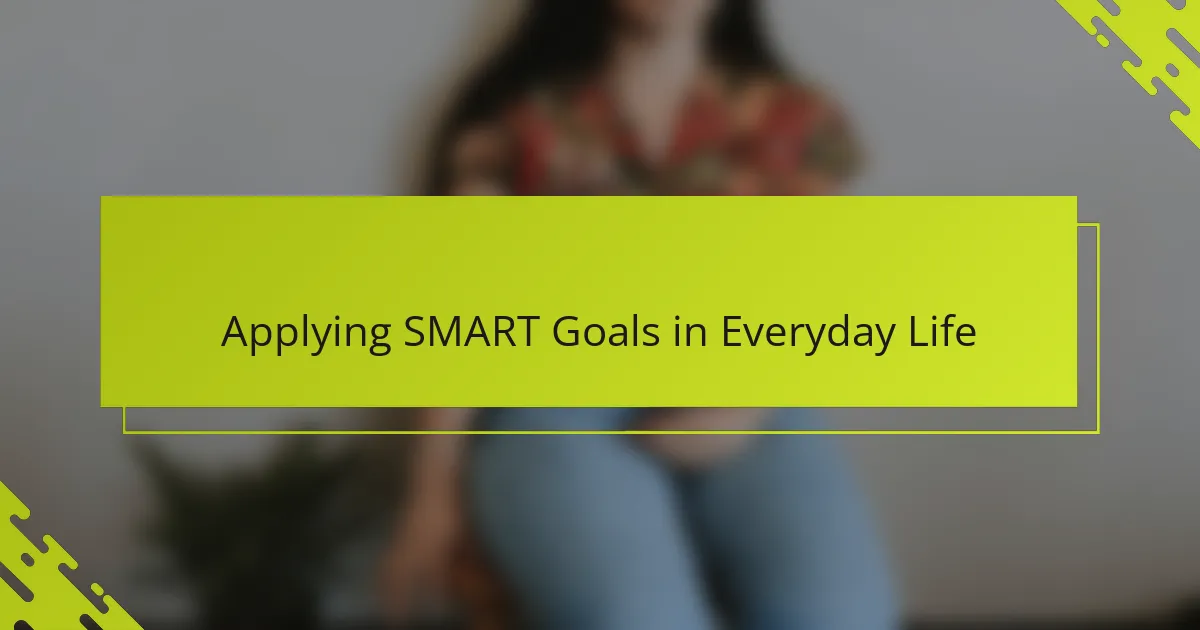
Applying SMART Goals in Everyday Life
Applying SMART goals in my daily routine has been like switching on a light in a dim room. Instead of vague hopes about “getting more organized,” I now set clear actions—like dedicating 15 minutes every morning to planning my day. This small step feels manageable, yet it shifts my whole mindset towards productivity.
Sometimes, I catch myself wondering if being so precise takes away from spontaneity. But I’ve found that SMART goals actually create space for freedom—they streamline what needs focus so I can fully enjoy unstructured moments without guilt. Have you experienced that relief when clarity replaces overwhelm?
What’s most rewarding is seeing progress in real time. When I mark off a completed goal, no matter how small, it feels like a personal win—a reminder that intentional living is within reach. Could these tiny triumphs be the secret to sustaining long-term motivation in our busy lives?

Personal Reflections on Using SMART Goals
Using SMART goals has honestly reshaped how I approach my dreams. I recall a time when I aimed to deepen connections within my community but kept getting lost in vague intentions. Once I defined a specific, measurable action—like reaching out to one new person each week—I felt a new sense of ownership and excitement about those relationships.
There’s something reassuring about setting achievable and relevant goals, especially when life feels unpredictable. I remember struggling with burnout before, trying to do too much at once. Breaking things down with realistic steps taught me to honor my limits without giving up. Have you noticed how this balance can actually fuel your confidence rather than diminish it?
Deadlines used to feel like pressure-cooks for my anxiety, but framing time-bound goals as gentle nudges changed the game. I started viewing them as invitations to celebrate progress regularly, not race against a clock. Isn’t it amazing how a small shift in perspective can turn goal setting into a source of encouragement?
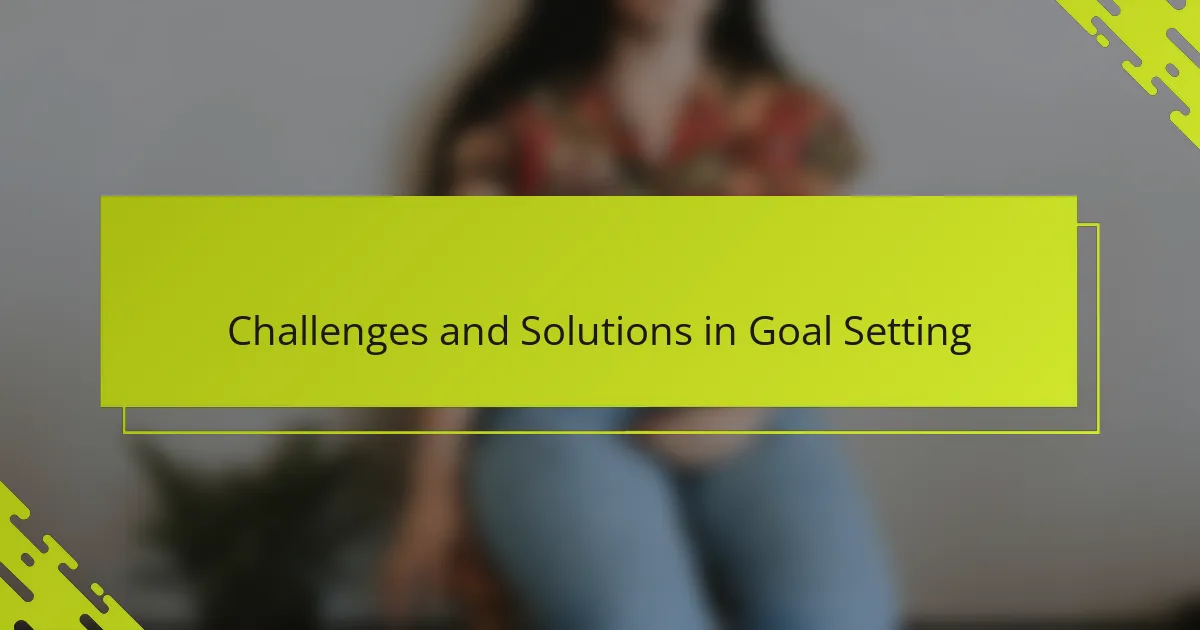
Challenges and Solutions in Goal Setting
Sometimes, the biggest challenge in goal setting is just getting started. I’ve often felt stuck because my goals seemed too overwhelming or unclear, leaving me frozen in place. Have you ever found yourself hesitating because the path ahead looks like a mountain too steep to climb? What helped me was breaking those big goals into smaller, doable steps—suddenly, the climb felt possible.
Another hurdle I’ve faced is maintaining motivation when progress is slow or setbacks hit. It’s easy to slip into self-doubt or question if the goal is still relevant. I ask myself: What’s driving me at my core? Reconnecting with the “why” often reignites my passion, reminding me that the struggle is part of the growth.
Lastly, balancing ambition with reality can be tricky. I used to set goals that, while inspiring, weren’t realistic given my time and energy. This taught me the importance of the “achievable” part of SMART—setting goals that respect my limits doesn’t mean I’m aiming low; it means I’m being kind to myself. Have you tried adjusting your goals mid-course to fit where you really are? It’s a game-changer.
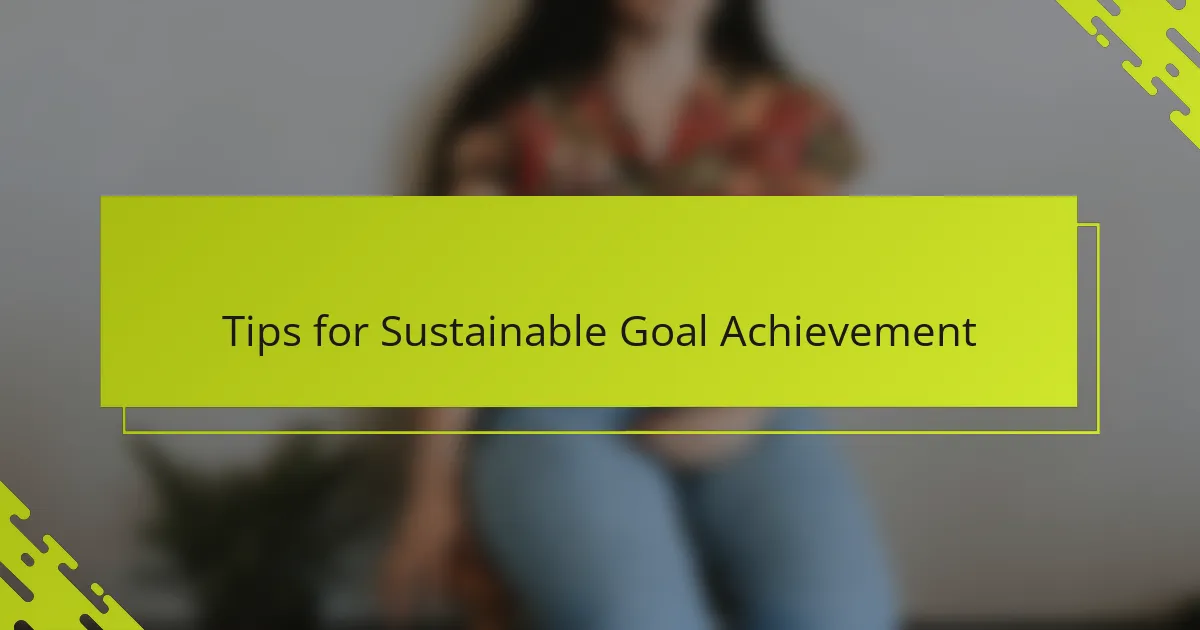
Tips for Sustainable Goal Achievement
Sustainable goal achievement, to me, feels less like a race and more like tending a garden. I’ve learned that pacing myself—celebrating small wins instead of waiting for the big breakthrough—keeps my motivation alive over the long haul. Have you noticed how tiny daily habits can quietly build up to something meaningful without overwhelming your energy?
One thing I remind myself often is to stay flexible. When life throws curveballs, clinging rigidly to a single outcome can lead to frustration. Adjusting goals as I grow or as circumstances shift isn’t failure; it’s an act of self-compassion and wisdom. Can you think of a moment when bending your plan actually opened new, unexpected doors?
Finally, I find that sharing goals with trusted friends or community members adds a layer of accountability and encouragement that’s hard to beat. It’s like having a safety net woven from understanding and support, which makes the journey feel less lonely. Do you have someone who cheers you on when the path gets tough? If not, maybe it’s time to build that circle together.
